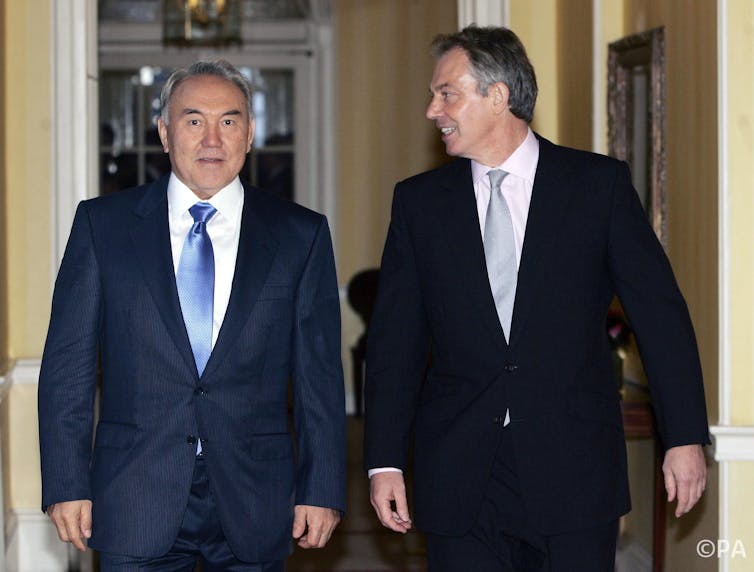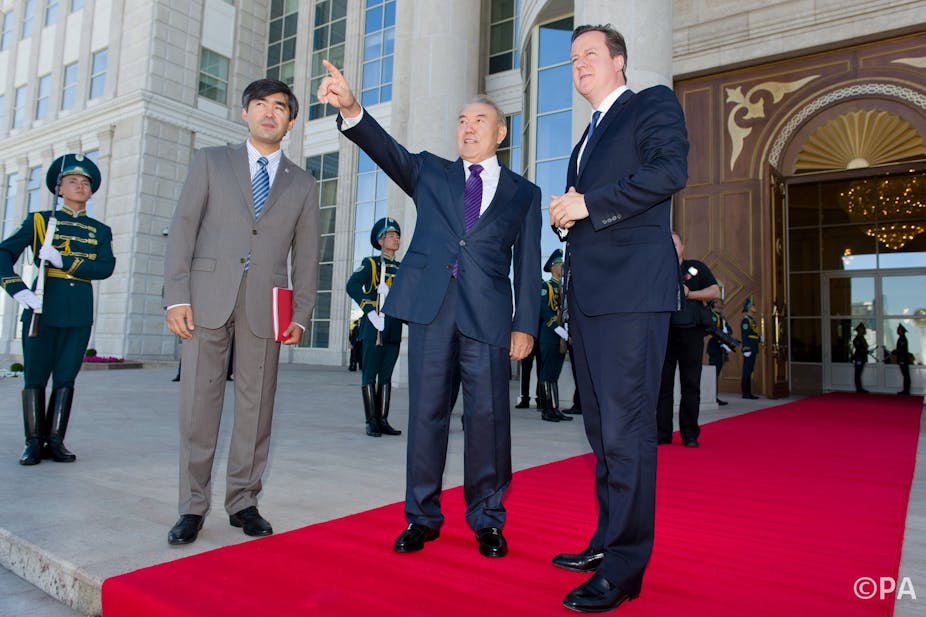Why do states and societies collapse? Efforts to explain the hugely complicated conflicts in Syria and Libya have understandably placed heavy emphasis on these nations’ ethnic or tribal diversity. Writers and broadcasters sagely remind us that no country is homogeneous, and that dictatorships have little chance of survival without democratic space in which to manage difference peacefully.
This standard narrative is often applied to post-colonial states, and with good reason. Former colonies in Africa and the Middle East had their national borders drawn for them by dying empires, who barely understood their subjects; new nations were formed with highly diverse, sometimes mutually antagonistic populations. To this day, many post-colonial countries’ legislative houses are divided, and their central executives are struggling to reconcile their populations’ split loyalties and interests.
As order disintegrates, so do borders. Tribalism and religious disagreement undermine old regimes, and communities become militias. Intervention only accelerates fragmentation, as witnessed in Iraqi Kurdistan, and sectarianism quickly becomes a dominant theme.
This is a very widely used argument: multicultural dictatorships are ill-equipped to manage difference by comparison with democracies, and so they ultimately collapse in a storm of internal violence. By definition, dictatorships lack any transparent method of conciliation; when disagreement and discord arise, they instead opt for violent repression.
So it has gone in Syria. Since the country’s civil war began, Bashar al-Assad’s Alawite heritage has stoked Sunni Syrians’ fears of ethnic cleansing. In a situation like Syria’s, sub-national ethnic and cultural affiliations make it harder for one figure to act as leader of the nation, even by force.
But even as we in the UK are hardly at ease with our own ethnic and cultural diversity, other countries at the autocratic end of the spectrum are managing difference relatively well – with no signs of falling to the forces of democratisation.
The Kazakh example
British media outlets rarely run pieces on Kazakhstan; when they do, the background they give on the country’s history is piecemeal. For example, last summer, Cameron became the first British Prime Minister to visit the country while in office. News reports never failed to mention the country’s poor human rights record, but they also expounded on its vast natural resources (particularly oil and gas), and its crucial role in supporting Britain’s withdrawal from Afghanistan.
Yet despite its current stability and growing economic importance, Kazakhstan shares some basic aspects of its past with the likes of Syria.

Kazakhstan was a possession of the Russian Empire, and was given its borders and its administrative structure by the early Soviet regime. The new territory pulled together a host of tribal communities, with different agricultural practices and widely varying interpretations of Islam. In the following decades, Kazakh society changed enormously: growing urban centres hosted more and more Russians, nomadic communities were forced to settle by soldiers and farming efforts were collectivised. The region suffered a crippling famine, and famously hosted large Gulag penal camps and the Polygon nuclear testing site.
In 1986 the republic’s then capital, Almaty, witnessed unrest and street protests at Mikhail Gorbachev’s decision to replace the first secretary of Kazakhstan, himself a Kazakh, with a non-Kazakh candidate. These protests marked the beginning of the end for the USSR. But despite the collapse of Soviet power, Russians today still represent around a quarter of Kazakhstan’s population.
Nursultan Nazarbayev, who has run the country since before the end of the Soviet Union, is not one for democratic reform. He shows no sign of relaxing his authoritarian approach to politics, whether it be in his electoral machinations or his stance on opposition movements. But his regime defies the stereotype of dictatorships when it comes to dealing with diversity.
While post-Soviet attempts to popularise the civic “Kazakhstani” have since given way to a more ethnic “Kazakh”, the state’s idea of citizenship has never been racially exclusive. The country had greater trouble accommodating rural and nomadic Kazakhs immigrating from Mongolia and China after the collapse of the USSR than it has had managing the mix it inherited.
Museums and memorials struggle to strike the right tone when condemning the actions of the Soviet state, because the nation’s current elite are products of that same state; this forces awkward and potentially inflammatory elements of the past into the shadows. In their place, the Nazarbayev administration has taken its highly diverse nation and embarked on an overt and concerted project of nation-building.
While Kazakhstan encourages its people and international observers to look to the future with its immaculate new capital, Astana, the contrast with other Central Asian nations could hardly be greater. Kyrgyzstan has gone from one corrupt leader to another; authoritarian Uzbekistan struggles to suppress unrest. Both have a history of ethnic conflict.
Meanwhile, Kazakhstan has successfully rebranded a Soviet workers’ holiday as “Unity Day”, an explicit attempt to “bring all the ethnic groups living in our country even closer together”. The goal of inter-ethnic harmony is prominent in official rhetoric; police training has been reworked to better prepare officers for work in a multi-cultural state.
Even on public transport, the multi-ethnic model of Kazakhs citizenship is front and centre. The trolley-buses of Almaty boast small television screens, which show video clips of variable quality. One clip, with relatively high production values, shows a series of softly lit citizens of different professions, ages and ethnicities. The final caption reads “Kazakhstan – it is you”.
Make no mistake, tensions do exist in Kazakhstan: concerted efforts have been made to diminish the perceived influence of Russians, especially in the north of the country. Some protest has been attributed to militant Islam or economic inequality, and there are fears that the country will struggle to maintain its much-publicised stability when a successor to Nazarbayev inevitably comes forward. But given the far-right parties and immigration panics gathering pace in European democracies, these problems hardly sound extreme – even while Kazakhstan’s domestic policies resemble some of the world’s most autocratic societies.
The similarities between Kazakhstan and Syria are skin-deep; anyone who claimed that the two regimes were functionally identical would be a brave sort of social scientist. But what they do share is important: a long colonial history, arbitrary borders, and a heterogeneous population to show for it.
The sheer variety of Syria’s population and the artificiality of its borders may seem like an excellent explanation for that country’s failure now it has failed. But Kazakhstan’s continuing success shows how wrongheaded our assumptions may be.

